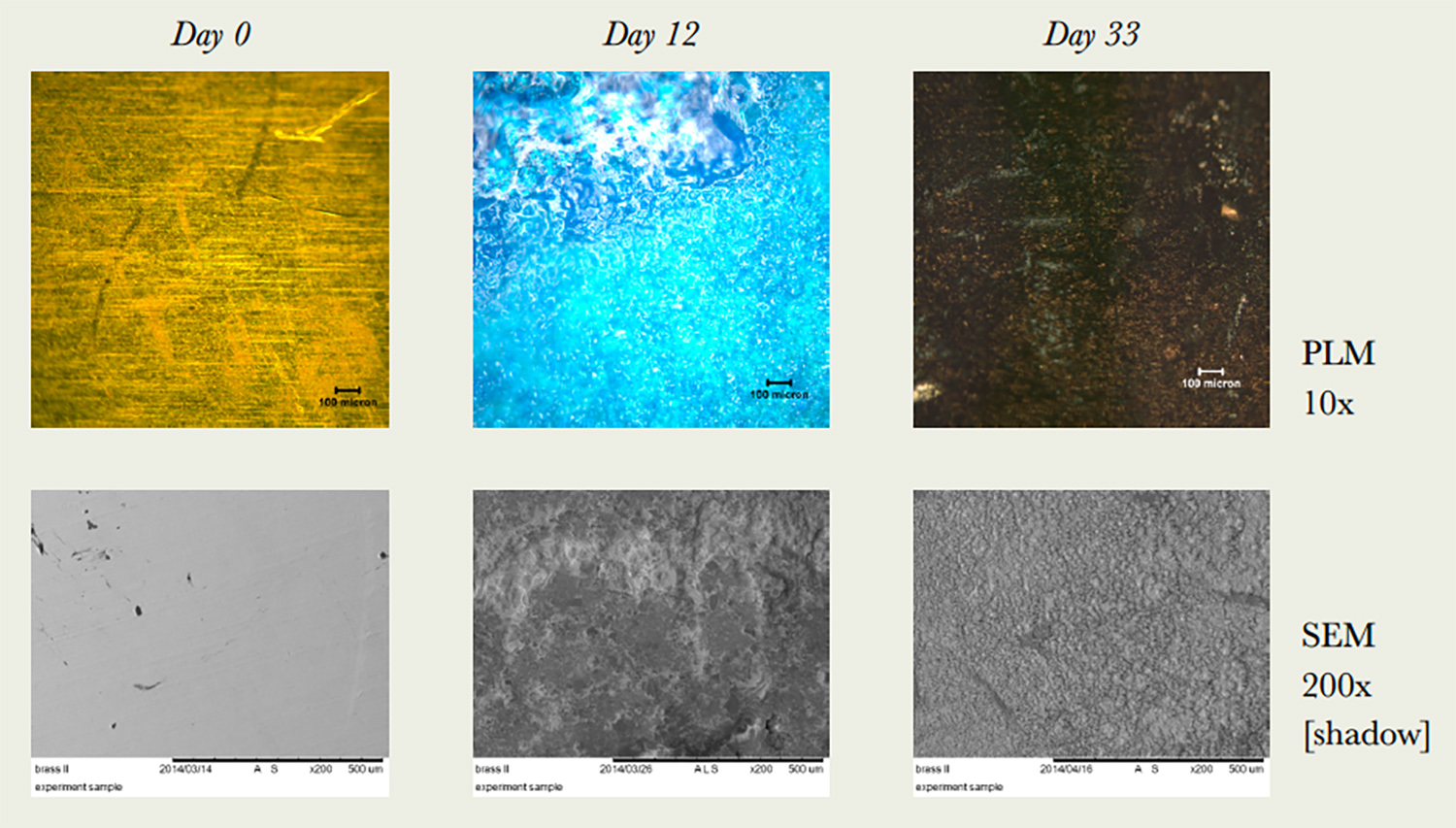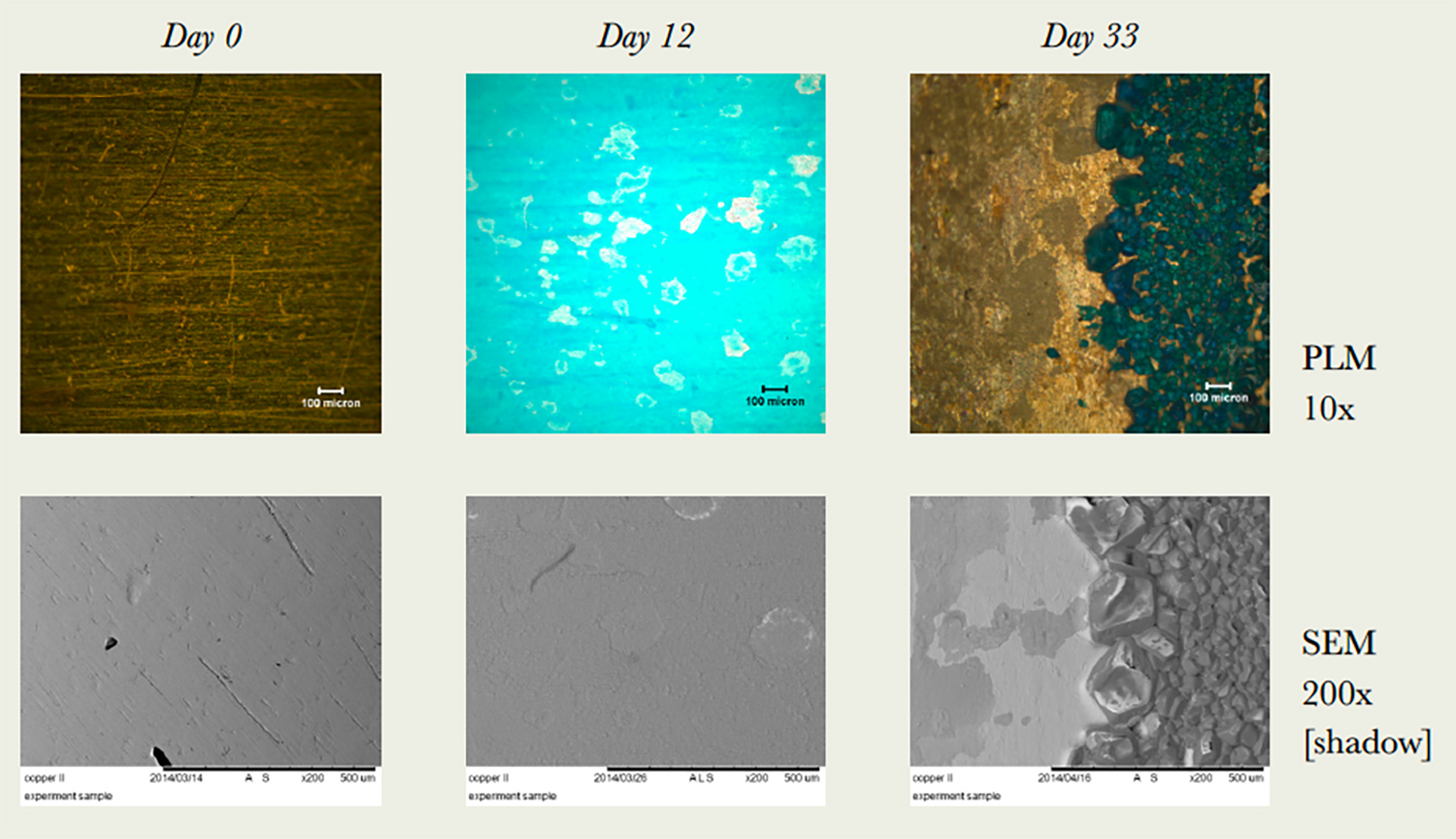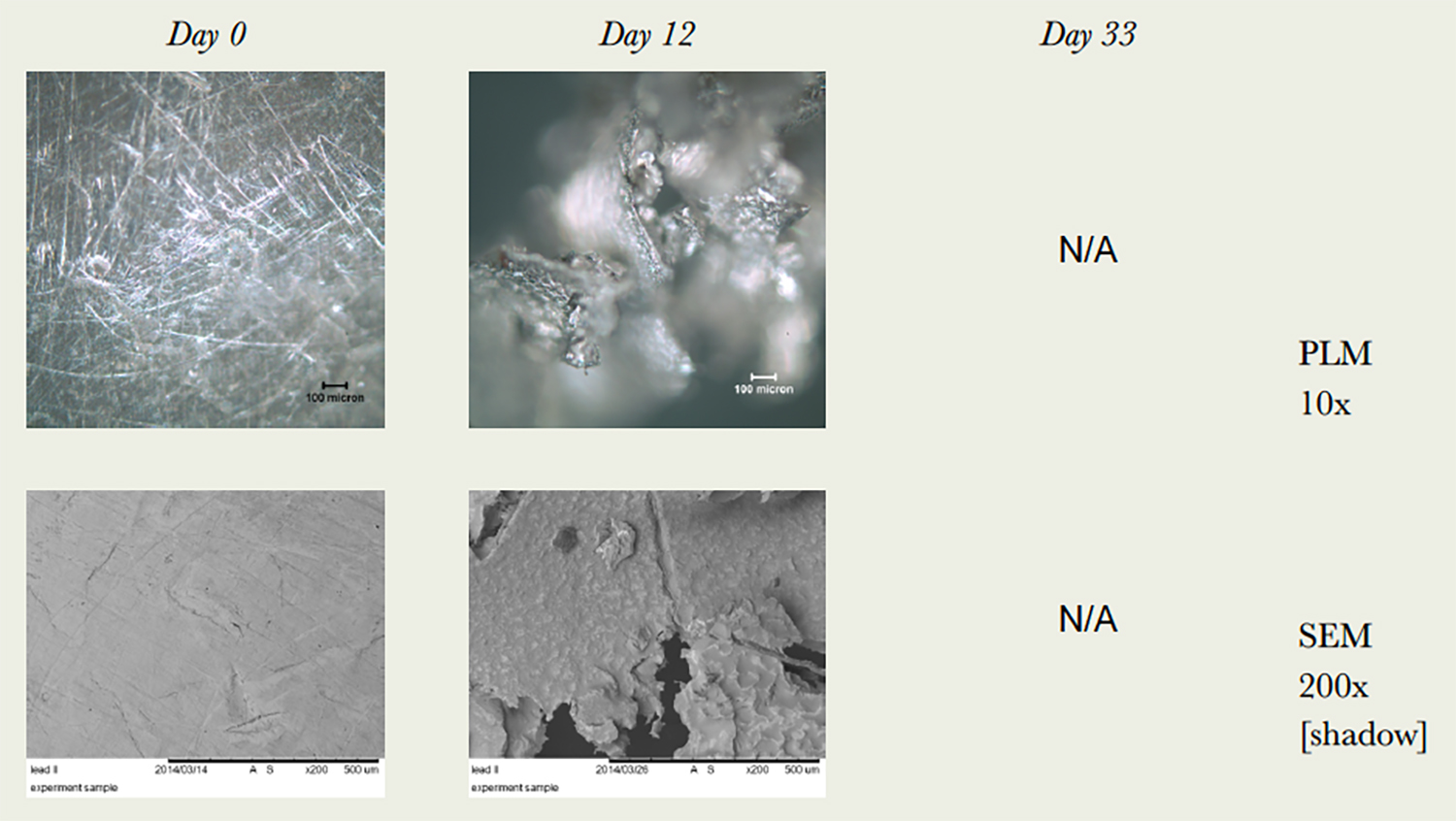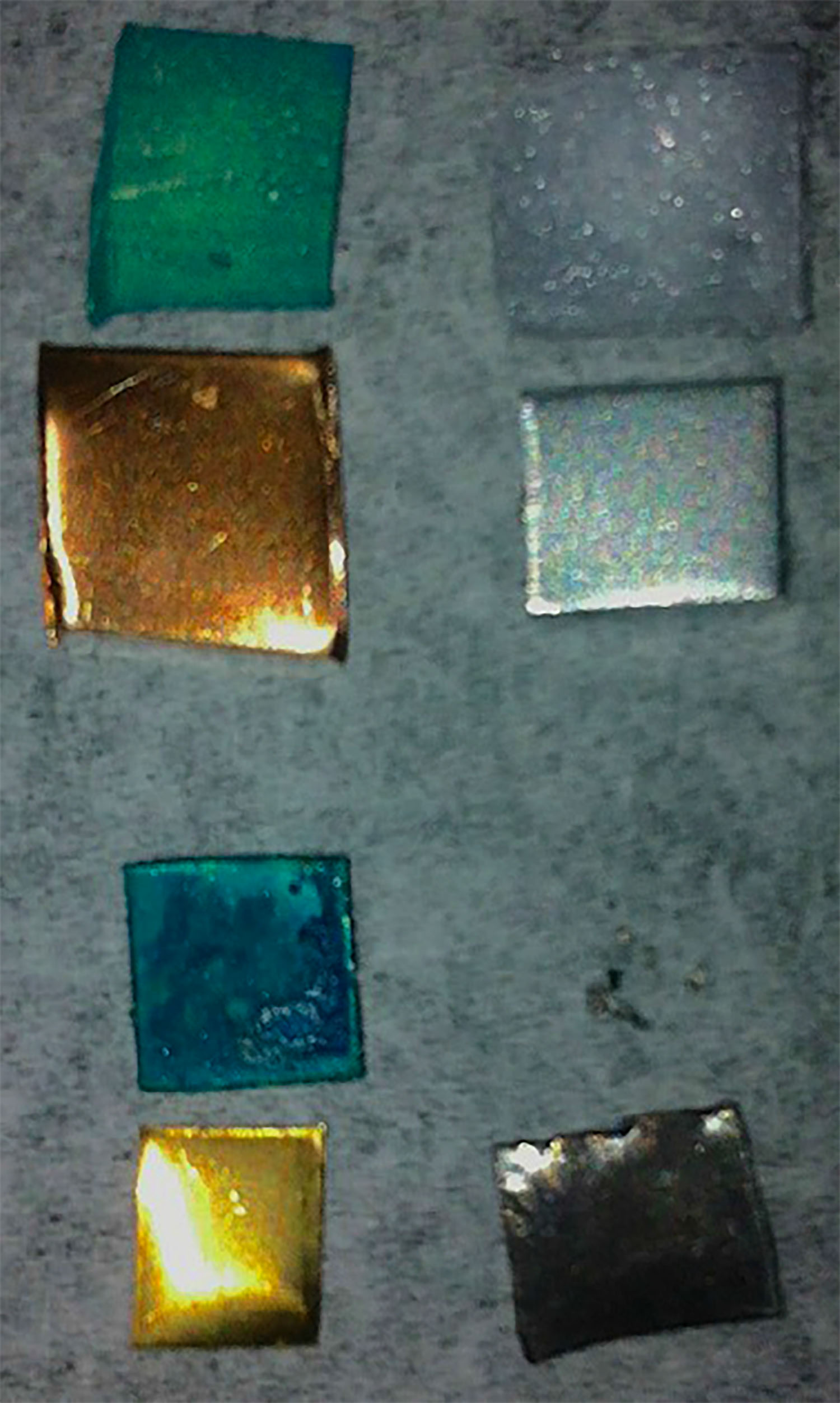"Metals in an Acetic Acid Environment: Indoor Pollution in Libraries & Archives"




Metals are commonly found in archival collections as supports and coverings for certain photographic techniques, as hardware on bound materials, and as remnants of the typesetting industry. This experiment focused on copper— which can be found as the support for daguerrotypes,—zinc—found as photozincographs,—lead—which is the main constituent of metal type alloys,— and brass—which is prevalent as coverings for photographs, as hardware for books, and in the form of linotype matrices.
These metals have the potential for contact with indoor pollution in an archival environment because acetic acid is a degradation product of materials such as paper, wood, and cellulose acetate film; other collections items as well as housing may be the source of acetic acid pollution.
The primary goal of this experiment was to observe any deterioration on the surface of the aforementioned metals that might occur in a simulated environment of a high concentration of acetic acid
